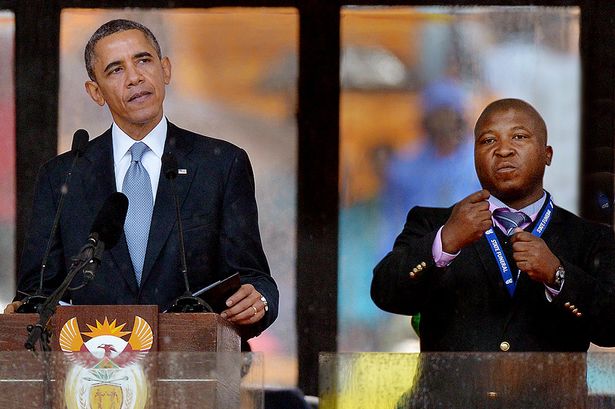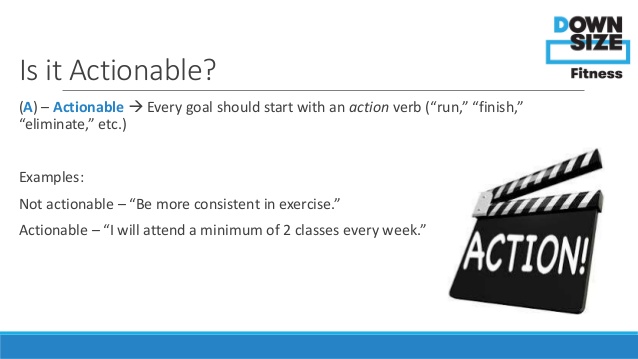
Featured Blog | This community-written post highlights the best of what the game industry has to offer. Read more like it on the Game Developer Blogs or learn how to Submit Your Own Blog Post
5 Steps to a Great Game Dev Hiring Process
A step by step guide to a better game dev hiring process.

[Note: Also featured on author's personal blog: odiousrepeater.wordpress.com]
If there’s one thing I’ve learned in my 15 or so years in the games industry, it’s that few aspects of the business are paid as much lip service as hiring.
“Yes”, your prospective boss may tell you as they take you on a tour of the office, “hiring is extremely important. Hiring is ultimately how we maintain our culture and value creation capacity, while at the same time ensuring that we have the drive and flexibility needed to pivot when the market so demands – and also to beat that same market to the punch through everyday grassroots innovations”.
So far, so good, you think. A bit bureaucratic an answer perhaps, but the theory seems on-point.
And then they introduce you to Jane, the company’s lone in-house recruiter. Jane has been left to her own devices to dig up potential candidates or at the very least ensure that the candidates find her. She is also expected to manage all the vetting and stage 1 interviewing of every single eligible and interested candidate, regardless of subject matter area. Additionally, she is not allowed to use outside agencies to track candidates down. Too expensive, you see.
As you start looking around for the nearest fire escape, or at the very least a window to jump out of, you’re told by your host in a magnanimous tone of voice that Jane “has one of those fancy LinkedIn Pro accounts”. When you ask how many people she’s expected to recruit this fiscal year you quickly wish you hadn’t.
It’s a caricature, but one that most of us with hiring experience have, at least partially, experienced in real life. The reason it’s so common is because the underlying reasons are often the same. They include a lack of understanding of how much work is actually required in order to bring good staff through the door, as well as outright arrogance; thinking that the reputation of the company will magically attract the right people. The filtering process and negotiation phases are also routinely under-estimated, as well as what happens once the candidate has actually commenced working at the company.
I have, however, yet to meet anyone who claimed that having the right staff is not important. Many people just suck at attracting and hiring said staff. So I thought I’d put together a list of my own personal best practices for not only “doing hiring the right way”, but more importantly “doing games industry hiring the right way”.
Bad Practices
The process I outline later in this article is written in a “do” format, but I thought I’d get a couple of “don’ts” out of the way first. The reason is that these are so common, and so harmful, that even if the rest of my list implicitly covers them, I don’t want to risk anyone failing to read between the lines and fatally damaging their project or company in the process. The number one “don’t” is…
Don‘t Do “Track Record Hires”
When I say “Track Record Hires”, I mean the kind where you start frothing at the mouth over a candidate’s CV, making up your mind right then and there. Take it from me rather than learning this the hard way: the number and perceived quality of projects and past employers is among the least interesting things to track when trying to identify your next hire. The reasons are numerous; there are plenty of people who lie and exaggerate on their CVs, there are many projects that have been delivered in spite of – rather than thanks to – the individuals involved, and so on and so forth. You really can’t count on an impressive track record to accomplish anything beyond hiking up the salary expectations of the candidate substantially, so even if the person seems to be a brilliant fit “on paper”, your work has only just begun. In fact a more senior and experienced is more likely to be incompatible and unmalleable than a more junior person – as seniority often brings rigidity and “knowing what is right from experience”.
That’s all I’m saying about this one. Buyer beware!
 I've a feeling the guy on the right had an impressive CV. He definitely does now.
I've a feeling the guy on the right had an impressive CV. He definitely does now.
Don’t Do Simplistic Budgeting
If you don’t consider all the factors when allocating time, effort and resources to the hiring process, you will get terrible results, one way or the other. Sometimes, an overly simplistic model is less useful than no model at all, as it’ll skew your expectations and make for poorly informed decisions. Overestimating your hiring rate by even 10% may well lead to disproportionate losses of productivity, for reasons you won’t understand except maybe after the fact.
Let’s revisit Jane from the intro again. Jane wasn’t allowed to enlist the help of staffing agencies in finding the right candidates. The 15-20% commission on the first yearly salary was deemed too expensive by management. Indeed, let’s assume that it’s the higher number, and that the candidate would earn €40 000 a year. That’s an €8000 commission – quite a hefty chunk of change!
Except it’s only hefty if considered completely out of context. Let’s assume for a second that Jane the recruiter also makes €40 000 per year. For a candidate to be “too expensive” in coming from an external agency, we’d have to assume that Jane can find that same candidate – or a better one – if she only puts in the equivalent of 2.4 months’ additional work. That’s what €8000 amounts to.
There are quite a few problems with this model, including…
… How brain-breakingly impossible it is to find certain candidates for certain roles during certain periods of time. I’ve been in situations where in spite of working with external agencies, we’ve not been able to find a candidate with a suitable profile for several months longer than expected. Meaning that Jane on her own would probably have needed still longer to find the candidate, except…
… There’s still no guarantee that time invested by Jane translates into hires. Because I meant what I said – we were working with external agencies, plural. And in the end, only one of them finally found the right candidate and could collect the commission from placing them with us; the others ended up having worked “for free”. Which further complicates the man-hour-per-hire cost. And there’s still more to it, as…
… Candidates often have timing windows attached to them. If you throw too narrow a net, you may simply not reach a candidate that would’ve been a great fit before someone else does. Which complicates the “simulation” further still.
Hopefully I’ve made the point well enough. Don’t be, as we say in Sweden, “stupidly frugal”; saving a cent now to spend a euro later. If you think paying an agency 20% is expensive, imagine having your engine team idling for 2 months in anticipation of the CTO you promised them.
 Word.
Word.
The Right Way
With the “don’ts” out of the way, let’s have a look at the “dos”.
Step 1: Prepare
Perhaps unsurprisingly, before you start putting time, effort and money towards staffing your company up, a bit of planning goes a long way. The amount of planning you need to do will vary; perhaps you’re a brand-new studio staffing up from scratch or maybe you’re just adding a project team or even just one new individual at an arbitrary point in time. With that in mind, there are a few things you should always do to some extent.
Define your hiring needs
What role are you hiring for and why? How many of them? For which project? What’s the timeline of that project? By when do you need the new employee to be productive? What happens if they are not; how do hiring delays scale? What is the priority of this role relative to other roles for other projects? These are just a few examples of the kinds of questions you should be asking in order to more effectively tackle the next step.
Define your hiring constraints
The hiring constraints include everything from the aforementioned use of external recruiters to the salary brackets, relocation packages and any other incentives, as well as any technology or other resources you might need. Another way of thinking about it is “what tools do we have available to us to identify and attract the right candidates”, and this question must always be tightly connected to the business realities of your organization. Tying it to some sort of abstract goal like “only hiring the best people” will seem like a rational way forward, but you’ll find that it does little in helping you focus and define a strategy. Look towards hiring the right people, for your organization and for the reality in which it operates.
 This image is about fitness. But really, it can be applied to business goals too.
This image is about fitness. But really, it can be applied to business goals too.
Get organized
I’ve seen this step messed up by people who really should’ve known better. At one studio where I was made department hiring manager I quickly found that candidates were being tracked in giant mind map saved locally on a department head’s computer. Communication with and about the candidate was handled through emailing.
To use management speak – this did not scale. The studio was struggling to hire even 30 people in one year. While this did correspond to a sizable increase in their workforce, they had delegated much of the work throughout the organization. It should have been faster, but much was lost in painfully slow turnaround times and “fumbles”, mostly stemming from disorganization.
After I’d done an inventory of the situation, I decided to put my foot down and set up a ticketing system with a custom, simple workflow in Jira – which we already used for other purposes within the organization. It worked beautifully; each candidate got their own ticket, categorized and tagged depending on their area of expertise and the team they were interviewing with. Comments were added to the tickets themselves and the only emails that got sent around were from that system, letting people know when new candidates, comments or other edits arrived. The system also allowed for attachments of CVs and other relevant files. A cool bonus was that HR and hiring managers throughout the company could see every candidate in the database and inform each other that “if he’s not a fit for your team, I’d like to interview him for mine”, and vice versa. This kind of transparency is hard to expect from “organic” word-of-mouth between hiring managers.
There are loads of tools available to help with this kind of practical stuff. There are whole HR suites that require little configuration, and that go beyond just recruitment; they have every conceivable talent management tool built-in, and are as expensive as you’d expect. It all comes down to your needs and constraints. But even on a slim budget, something like Trello will make your lives so much easier than sending emails back and forth.
Trust me, set it up early.
Step 2: Identify and Attract
The next step is to start putting actual people through the pipeline you’ve set up. For this to be possible, you either have to find them – or they have to find you.
Either way, spending a healthy amount of time and effort on the actual job spec is going to make things much easier. This doesn’t just mean being clear and unambiguous about what tasks you need performed; it also means accounting for the hiring market at this given point in time, as well as the growth ambitions of the company.
You’ll find that trying to attract Level Designers with console and first person shooter experience is a different challenge today than it was just five years ago. Also, if you happen to be working in the Unity engine, but hope to move to a different set of tools in the future, you’d do well to note that a “programmer” is generally not the same as a “Unity programmer”. Many of the latter are surprisingly ineffective outside of the Unity ecosystem.
Ensure that your job spec includes the following:
Job Title: (For example “Content/Level Designer”)
Mission: (What are the overall goals for the role, regardless of project? What do they bring to the team? To the company?)
Project: (If you can disclose. At least tell them the genre and platform(s).)
Typical Tasks: (From the more common to the less common.)
Candidate Profile: (Previous experience, track record and so on. Don’t miss out on the opportunity to find people with relevant transferrable skills – especially if the role is niche. If you’re looking for a Live Operations Manager, you’re not doing yourself any favours by discounting people who’ve been handling Metrics or Brand Management in the past. Some of those skills are invaluable, and can in some instances be much harder to train for than the skills normally associated with the role you’re hiring for.)
Finally, take this opportunity to sell the company, not just the position. If all you’re talking about is the day-to-day work the candidate’s expected to do, you’re quite likely to get the kinds of candidates that are running from something, rather than to you. Many of the best candidates are those who are not looking for a change of job – but could be convinced to change environments and, especially, cultures.
When doing this, try to be original – and by that I mean try to respect your audience. None of us want to read “work hard, play hard” ever again. It really tells us very little about what to expect in the environment you’re offering. Remember, we’re game developers. We understand goals and incentives. Explain to us what kind of behaviours are the “right” ones at your company, and what incentive system you’ve devised to get people to act accordingly. Is there a performance-based bonus structure? Overtime pay? “Endless” vacation days? Peer performance reviews? What’s the succession and talent management system like? These kinds of things will go a long way in differentiating your company from the many others out there.
Step 3: Assess
The assessment step is arguably the most difficult of them all because of all the factors involved. On the one hand there’s a limit to how much time you can spend on each candidate, not to mention how much time the candidate will be willing to spend being assessed. Once you’ve managed to find a sweet spot as far as total assessment time is concerned, how do you want to distribute that time? How much are you testing for hard vs. soft skills? How much is about vetting the candidate and how much is about convincing them?
I’m not sure there’s a perfect solution to all of this. But I have put together an assessment workflow that I personally think does a fine job, employing both salesmanship and good prototyping (!) practices.
Step 3-1: Interview
This initial interview should be between the candidate and hiring manager(s) and function as a sort of sanity check, to see if communication works between the parties; is there rapport, chemistry and so on. It’s also an opportunity for the parties to ask more in-depth questions about the things that should’ve already been communicated through the job spec and candidate CV/cover letter.
If you’ve done hiring before you’re thinking “so far so normal”, right? Well here’s the twist: the stuff I’ve just mentioned should be less than half of the focus of the conversation. Unless an immediate “deal breaker” is identified, the main focus of this chat is for the interviewers to get the candidate as psyched as possible about the job, project and the company.
This is counter-intuitive to some. Shouldn’t we be trying to be as hard on the candidate as possible, to try to avoid wasting any more time on them? Well no, not in this instance. Because the reason we’re buttering the candidate up is that the next step of the assessment will require them to do several hours’ worth of unpaid work. Trust me, very few candidates are interested in doing this off the back of nothing but a written job spec.
 Your goal is to get the candidate to look this happy while holding an 8+ hour assignment.
Your goal is to get the candidate to look this happy while holding an 8+ hour assignment.
Step 3-2: Remote Test
My standard framework for remote tests is as follows:
The test should produce deliverables as close as possible to what the candidate will be expected to produce on the job. Rules, structures and designs for designers, art for artists, executable code for programmers and so on.
The test should go both wide and deep. It’s important to be able to figure out a “profile” from the candidate’s answers. To accomplish this, some of the questions in my written design tests for game/level designers are theoretical and abstract. Meanwhile, others are more concrete, requiring the creation of diagrams and mock-ups.
Additionally, you should have a scoring system, where “deeper” (not necessarily more verbose, mind you) answers should count for more points than “shallower” ones. This works for practical tasks too. Let’s say that your programmer test is to copy the game “Pong” in Unity or Unreal or CryEngine – you can and should still break that test down into differently-scored parts. Did they prioritize the right features? What’s the quality of their code? The readability? Their use of placeholders? You can do the same for artists and other staff as well. Just make sure to test for the biggest number of potentially deal-breaking things as possible. It’s in that sense that we are employing good prototyping practices.
Consider the impact of communicating the point value of each question or task to the candidate (1-3, 1-5) etc. I personally choose not to because…
The test should be time boxed, and candidates should be disqualified or at least heavily penalized for missing the deadline. The time box will provide you with a common baseline for assessing different candidates, so that you don’t have to “weight” the results based on the amount of time spent. It’s also fairer to the candidates; employed senior candidates’ time is more precious than that of fresh-out-of-university noobs. The time boxing also tells you something about the candidates’ sense of priority. Where do they choose to focus their energy? This is why I personally don’t expose the min/max score of each question; I prefer to not force anyone’s hand by dangling points in front of them – but I also accept that not everyone will agree with this method.
When testing, don’t forget the “meta” layer. How does the candidate respond to being tested? Are they offended? Are they happy about it? How does their reaction map towards the culture you’re trying to build? Also, if they were to be hiring managers themselves, would you trust them to take the process seriously? If they think that their own track record should speak for itself, what does that say about their view of hiring practices?
Oh, and in case it needed mentioning: the tests should be assessed by the relevant subject matter experts, not “producers” or whatever your company calls its bureaucrats.
Step 3-3: On-Site Assessment
A lot of companies only invite people to come visit them in person once they have more or less made up their mind about the candidate. They see it as just one more personality check, to see if chemistry lines up or whatever, before extending the offer.
My take is a bit different. The third part in my process is the in-person assessment, and it’s just as serious a step as the previous ones. I see it as a test in its own right. Sure – the chemistry aspect is there. But once more, you should make sure to get as close to what the candidate will be doing on a daily basis as possible.
I try to follow the following structure for the on-site assessment:
[Brackets indicate timeslots in 24h format.]
[10:00 – 11:00] Introduction and follow-up. The candidate is introduced to the people they would be working the closest with on a day-to-day basis. Rather than just chatting and getting to know one-another, this would be a good time for a follow-up chat on the Remote Test. Even a successful candidate will most likely have performed less-than-perfectly under pressure, so here’s a good opportunity to see how they respond to feedback from their peers and closest co-workers.
[11:00 – 12:00] Presentation and discussion of the project. Here I try to present to the candidate what kind of game they will be working on, the vision and challenges and where they are expected to contribute. I try to ask as many open questions as possible here to see how well-aligned we are – even when meeting with non-designers. I’m a big fan of everyone pulling in the same direction, so I’ll try to find out where the candidate would want to take the game if left to their own devices. Big discrepancies between their visions and ours are not necessarily a bad thing – there can be a lot to learn from such a situation. An important question is, however, how easily realigned the vision of the candidate is. This applies even when hiring a vision keeper. Being rigid and stubborn in the face of valid feedback is rarely a sign of maturity.
[12:00 – 13:00] Lunch! Try to compose as diverse a group as possible and just get to know each other on a personal level. If they are an overseas candidate, this is a good chance to spot cultural differences and get a feel for how big a challenge it’d be for them to move countries.
[13:00 – 15:00] Practical assignment. The candidate gets a task that is somehow relevant to their specific role as well as the project they’ll be working on. One example is for a systems designer to design a new feature, or redesign an existing one. Someone working in content design may be asked to reconfigure a segment in a game to flow better. A writer could be asked to rewrite the interactive dialogue of a cutscene while still maintaining the same number of branches. Use your imagination – it’s invariably going to be somewhat specific to your project and your studio. It’s important to remember that the exercise is just that – an exercise, not an attempt to get “free work” out of someone. Rather, it’s about assessing how well the candidate takes direction, produces results, and ultimately presents them to clients and peers.
[16:00 – 17:00] Presentation. This is where the candidates present their methodologies, decisions and results to a relevant group of people – ideally someone from each relevant/affected discipline. What you’re trying to test for here is presentation and communication skills, as well as how they respond to feedback – even blunt, critical feedback – in a situation that’s as close as possible to the day-to-day realities of working on your team.
 This is on the first page when image searching "good cop bad cop". Bad cop just had to be the white dude that kind of looks like me.
This is on the first page when image searching "good cop bad cop". Bad cop just had to be the white dude that kind of looks like me.
This part scales both downwards and upwards. If you don’t have a full day available, then cut the whole thing by half. Hopefully this will yield results that are half as good, though I personally wouldn’t want to gamble on it.
I’ve read of companies that do week-length paid projects with prospective candidates. This may be not only impractical, but outright impossible. If the candidate is currently employed, their contract may prohibit them from doing something like that. That said, that kind of “simulation” would get you quite close to experiencing what actually working with the individual will be like.
Step 4: Offer
Finally, we’ve arrived at the offer stage – one that in my opinion doesn’t get nearly enough attention from companies. It’s tempting to simply leave this stuff with HR or whoever’s in charge of drafting employment contracts, but trust me, you’re not quite done yet.
Thing is, if you’ve decided that you want this candidate, it’s probably because he or she has proven to be competent throughout this gruelling process. Which makes it quite likely that they have other offers than yours on the table. Furthermore, there’s no reason to throw anyone a “standard” offer after you’ve collected this much information about them. You should know them well enough by now to be able to put together something a little more enticing than a figure and a starting date. Are they more likely to be motivated by an incentive (i.e. bonus) than a slightly higher base salary? Will they want to fly home to meet family more often than other candidates, and can you help with that? Some candidates will be more likely than others to put these kinds of requests into words. All of them will appreciate you suggesting it more than if they’d have to ask. It proves that you’ve been paying attention and it makes them feel important.
Another thing to consider is that just as you’ve been looking deeper into this candidate than most other companies probably would during their assessments, the candidate has seen more of you as well – that’s just how these things work (insert Nietzsche quote about abysses here). Getting a friendly follow-up call by the person who was playing “bad cop” throughout the on-site assessment will feel a whole lot better for the candidate than being formulaically approached by some HR person they’ve barely spoken to thus far.
Step 5: Coaching and On-boarding
Aaaaand we’re done! The candidate has accepted our offer, and all is good, yes? Well the most difficult and stressful part is over, that’s true. You now have one less person on your to-hire list. But that’s obviously not the end of the story, even after a hiring process as meticulous as this one.
Indeed, I have myself made the mistake of thinking that after putting all that time into getting the right candidate through the door, I wouldn’t have to coach them as intensely as otherwise. This is not true. The assessment, ultimately, is about figuring out the potential productivity, the potential cultural fit of a team member. But neither of these things are so much facts as they are processes – and they need to be continuously worked at. You forget this at your own peril – especially now that you’ve probably turned off “the tap” of new applicants, and have quite possibly turned away quite a few eligible candidates as well. It takes time to get the whole process rolling again, so it’s in your best interest to make sure this one works out – or at least to catch any mismatches as soon as possible.
Whatever your frequency of touching base with new staff is, consider doubling it for anyone who’s been with the company less than a month. Give them amnesty to talk to you about anything they want. Figure out how the reality of working in your team maps to what you and they expected. If they are from overseas, get a feel for whether they have experienced any culture shocks. If you find the time, put together a written-down “New Starter’s Guide” with a section especially for foreigners. Explain mundane stuff like insurances, bank accounts, the rental/housing market – all this other stuff that you take for granted. You might be surprised at just how much your staff retention is helped by your paying attention to “the little things” during those first few sensitive months.
And retention is crucial. Because let’s face it – a process this rigorous will take much more out of you and your team than just throwing a glance at a CV, doing a phone interview and then making an offer based on a gut feeling. Granted, you’ll definitely get better results by taking it more seriously, but that can still end up being a wasted effort if you then proceed to lose people because you didn’t handle the coaching and on-boarding well enough.

So take those things as seriously as the rest of them. Because ultimately, the best measure of any hiring process has to be how rarely one has to repeat it for the same role, and how much time and energy it frees up for what we really want to be doing: making games.
Read more about:
Featured BlogsAbout the Author
You May Also Like









